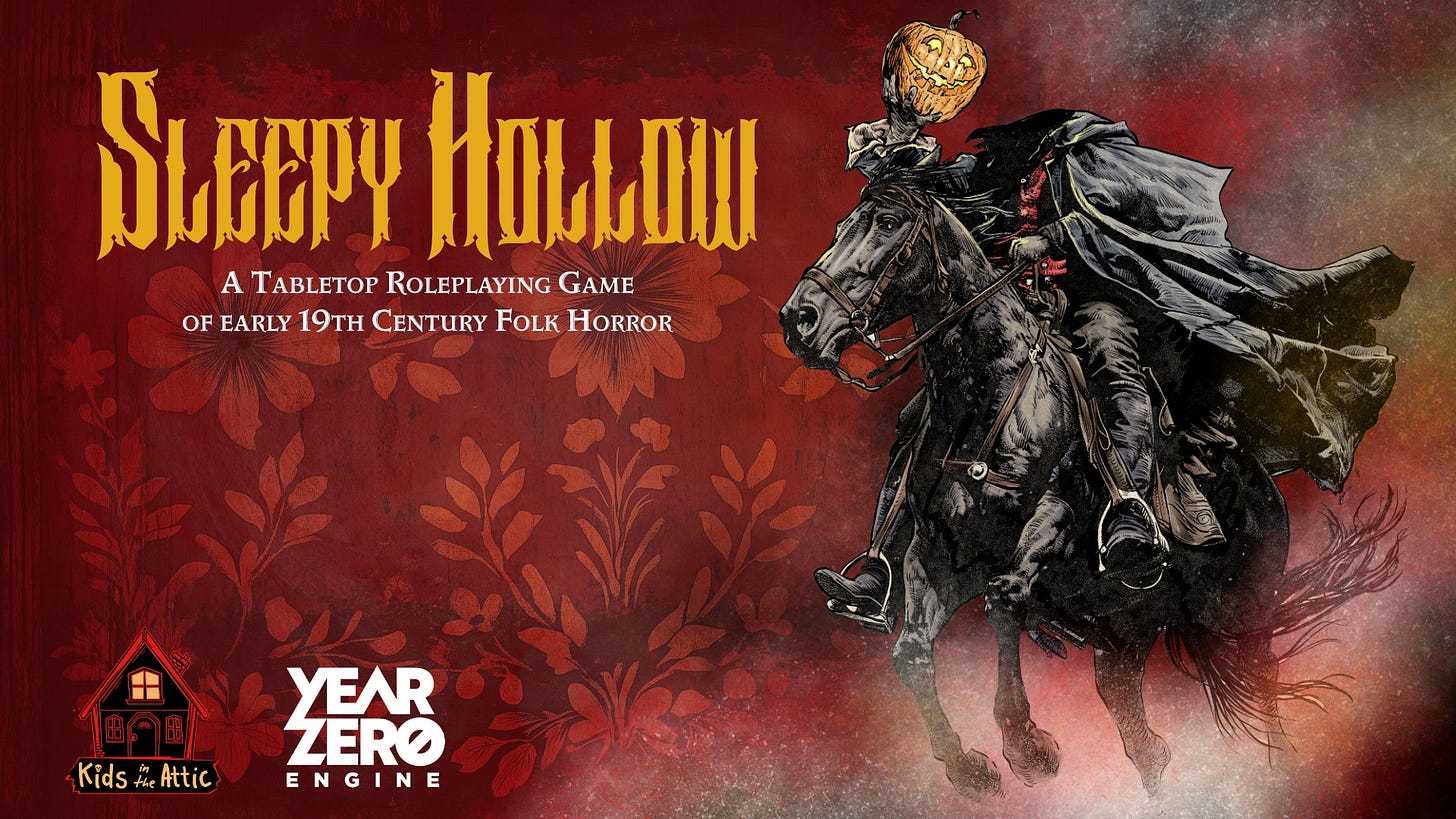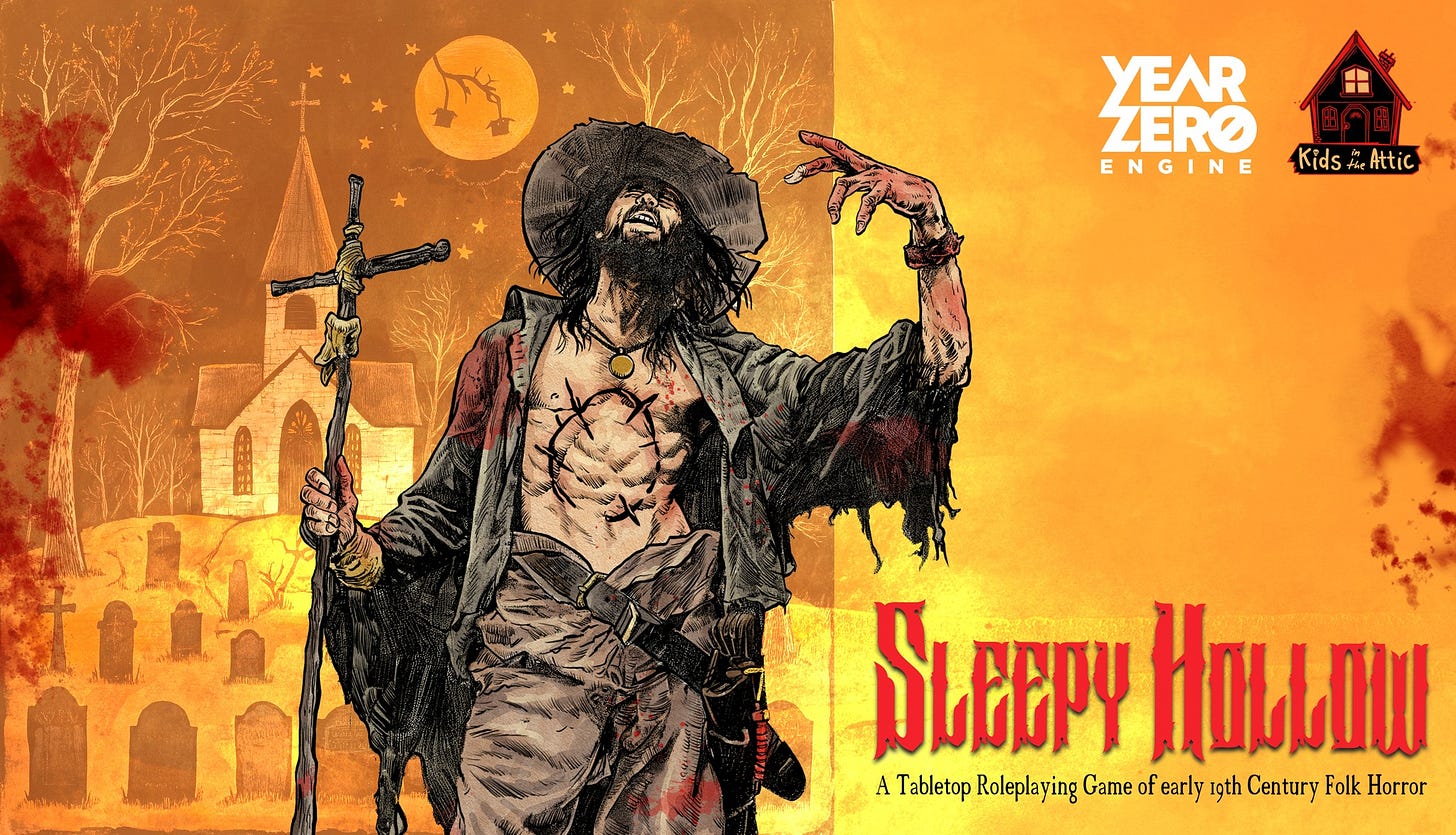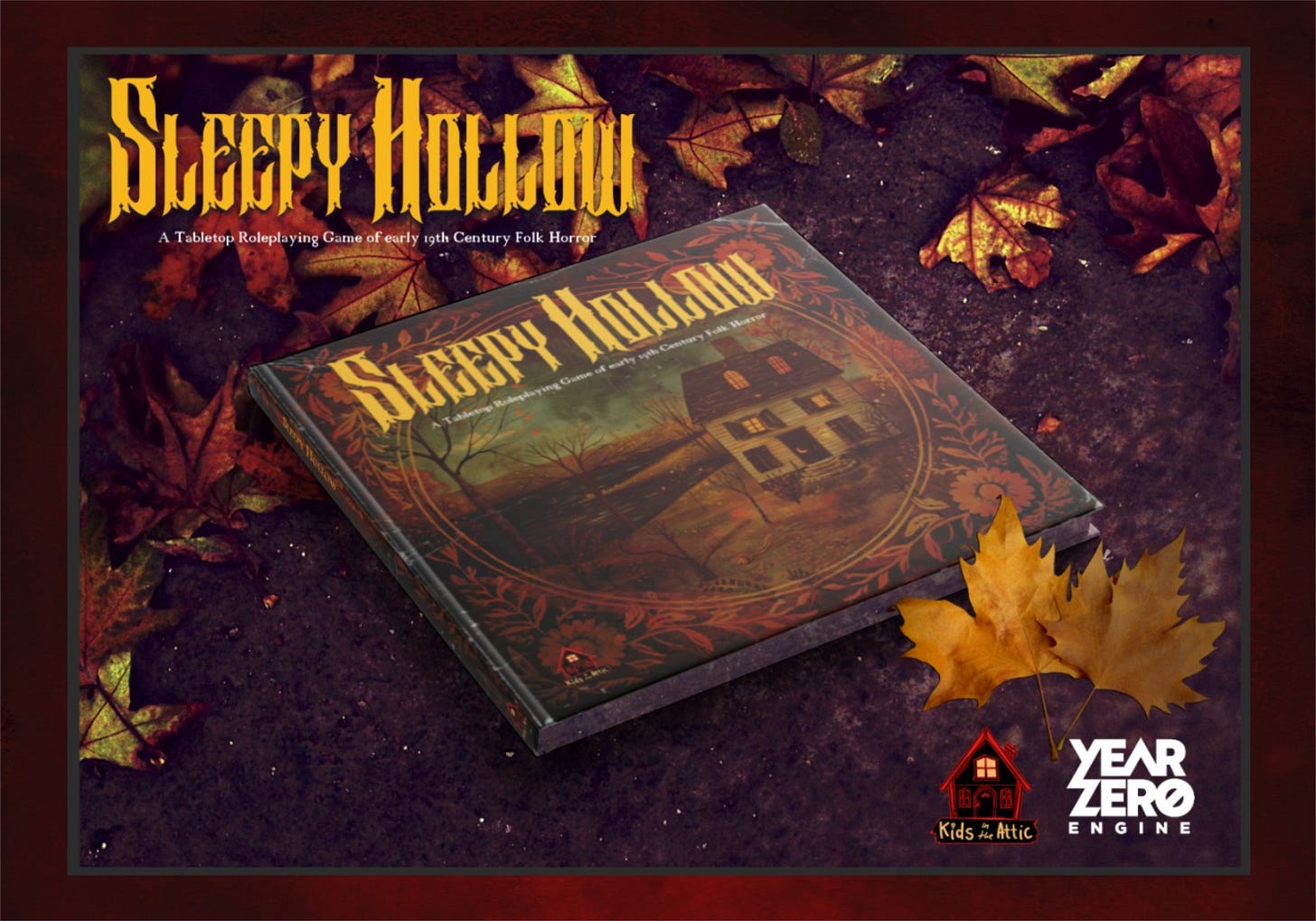Sleepy Hollow by Kids in the Attic
From the listless repose of the place comes a new roleplaying game
I’ve long been a fan of Rick Hershey, both as an artist and as a game designer. To be frank, guys like him make me jealous. You see, I’m just a writer. Just a game designer. Rick? He’s the whole deal. Writer, designer, artist, layout. He does it all. And he’s been doing it for years. Now he’s doing it under a new moniker: Kids in the Attic.
Rick’s always had a panache for horror, both in his games and his art so I was delighted to learn that he was going to be crowdfunding a new, stand-alone RPG based on the classic American folktale by Washington Irving: Sleepy Hollow. I was introduced to the classic fiction through the 1949 Disney animated version - which I knew as part of Disney’s Halloween Treat from 1982. In my years as a proto-goth it was practically obligatory that I fall in love in the 1999 Tim Burton film of the same name. It was only I adulthood that I read the fiction of the same name and it kindled my love of American Folklore alongside the Manly Wade Wellman Silver John stories. Heck, I even have a soft spot for the Sleepy Hollow TV series that ran from 2013-17 - though it drenches the trappings of the genre in a shellacking of over-the-top pulp.
That kind of colonial Gothic styling is something I genuinely love, but I never thought Irving’s short story was robust enough to build an entire tabletop game around. Once again, Rick has proven his expertise and proven me wrong.
While Hershey has written plenty of traditional d20-based content, his talents truly shine when he steps outside that box as seen in Stranger Stuff and his more recent vs. Ghosts. Powered by the Year Zero Engine, Sleepy Hollow is no exception. Hershey leans heavily into the late Colonial period and delves deep into the source material for game able material. Set 20 years after the disappearance of Ichabod Crane and presented through the lens of his nephew Benjamin who is a new arrival investigating the town, Hershey places the gamer right in the heart of this strange New York hamlet.
Creating a character begins with selecting an Archetype, but gone are bland selections of most games. Instead, the fiction is brought to the forefront, with options like Hessian Mercenary and Schoolteacher. It is assumed that player characters are residents, if not lifelong natives, of Sleepy Hollow and the nearby Tarry Town. Following the Year Zero formula, a selection of skills and gear follows - but the game shines in its use of the Stress mechanics made famous by the Alien RPG and the fact that everyone in Sleepy Hollow has regrets and secrets - especially player characters. This kind of inherent personal investment in the community prevents it from being a Scooby-Doo-esque “find the monster in the haunted place” affair and turns it into a personal story by default.
The eponymous village itself gets a loving collection of iconic locations with magnificent journal-style write-ups from Benjamin Crane as he conducts his investigation as well as further development for use within context of the game. Hershey blends history, fiction, and his own ideas near-perfectly to give the setting a truly lived-in feel. This feels like a real village from 1810 - because it was. But Hershey draws you into the mystery beyond the reality almost effortlessly.
A particularly nice touch is a collection of nefarious cults and secret societies that engage in shadowy machinations for their own purposes. Each of these is ripe for expansion and is implicit license for the Game Master to expand beyond simple history and existing fiction to make Sleepy Hollow, both game and setting, something all their own.
I was pleasantly surprised by several of Hershey’s design choices. It would be easy to make Sleepy Hollow a simple rehash of the original fiction with the PCs hunting down and defeating the Headless Horseman. But Hershey isn’t that shallow. Instead, Sleepy Hollow itself is troubled, haunted, and some even say a cursed place with more troubles than a sword-wielding equestrian in search of a head. But the supernatural is never anything less than that: supernatural. It was a breath of fresh air to see that overtly magical elements are largely absent. A handful of supernatural creatures sit alongside the Horseman himself - but you don’t see magical items, spells, rituals, or psychic abilities. Player characters are firmly mundane and in my opinion this makes the occult elements that much more daunting and terrifying. Like the source material, Hershey is playing for mood and theme over blatant magic and mysteries that are easily described in dice pools and target numbers. It’s a bold choice.
After reading it the draft text of the game, I have to say I’m absolutely giddy to see the final product with all of Hershey’s other talents applied in the final product. This is a wonderfully evocative game that is easily approachable for new gamers, doesn’t fall back on cookie-cutter design tropes, and remains loyal to the both the fiction and the genre it helped create. The choice to focus tightly on a single location and a very specific style of play does create a focused game experience, but if you’re looking for haunting, atmospheric horror that relies on player engagement and a recognition that this isn’t a simple “monster of the week” Buffy the Vampire Slayer with muskets game. It’s a game about slow burns, gut-wrenching reveals, unexpected discoveries, and what it means to have to face something truly horrific. And frankly, I can’t wait to get my hands on it. You can click the link in the first paragraph or any of the images in this post to join the crowdfunding.
This review was unpaid and unprompted and came up after Rick and I had a conversation and he was kind enough to show me the draft. Neither I, nor Barrel Rider Games, are endorsed by or compensated by Kids in the Attic for this review.






